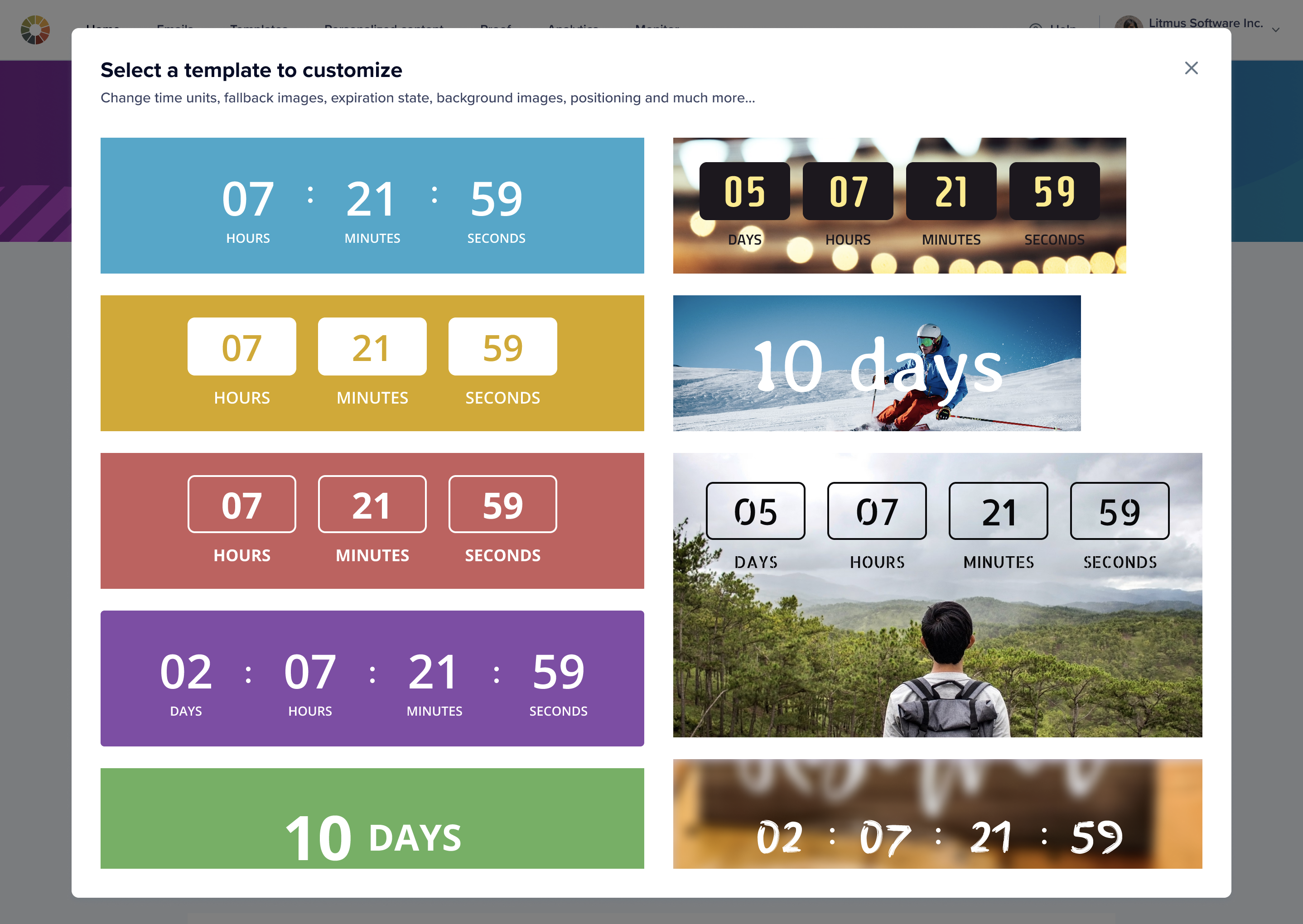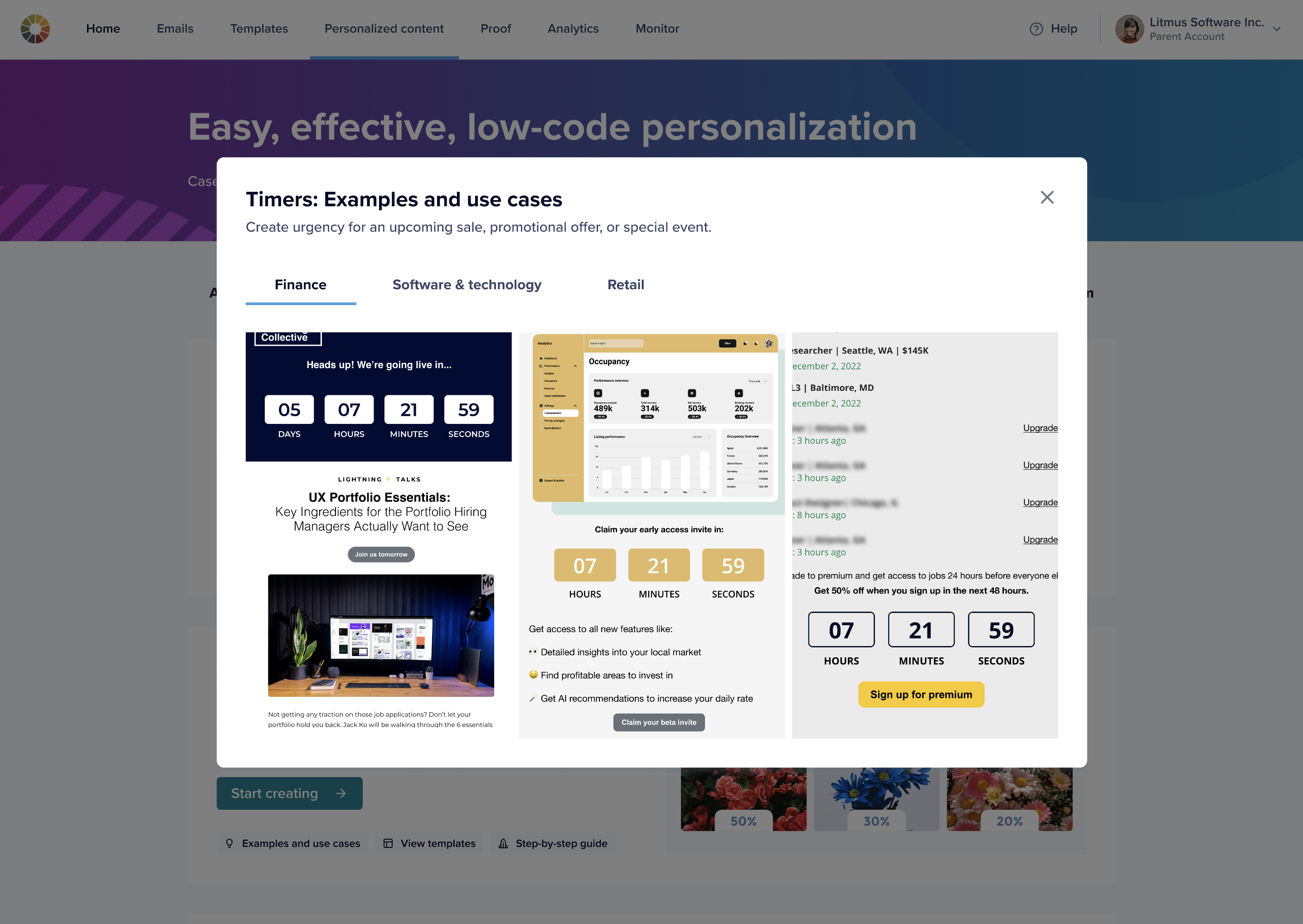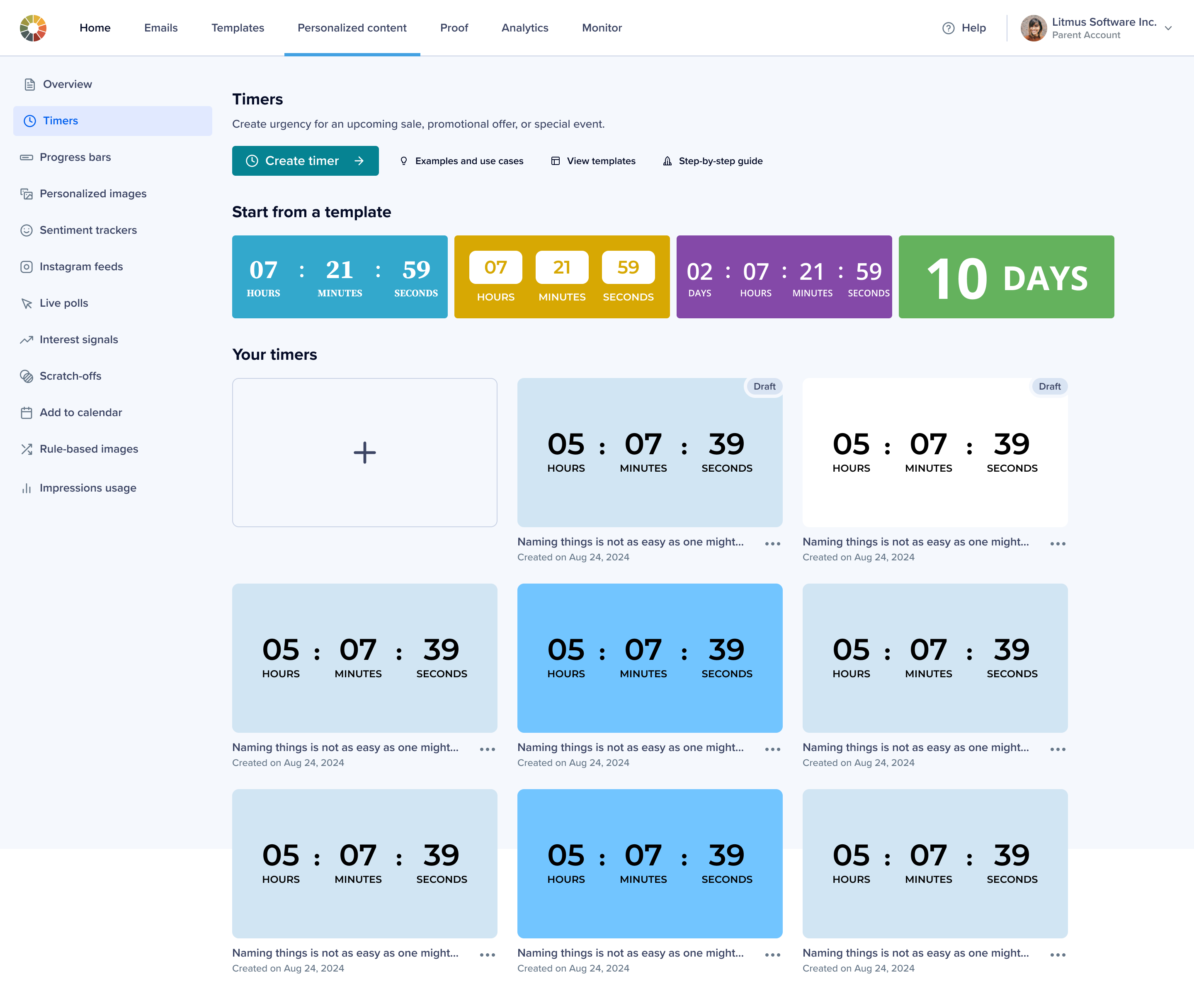+8%
+104%
After the initial launch of Litmus Personalize Essentials, the team began collecting customer feedback and analyzing usage data to identify opportunities to increase adoption, engagement, and, ultimately, retention. The core metric Peronalize affecting retention stood out from the get go.

The team set out to maximize growth, testing and incorporating many ideas into the product. Here are just a few of them.
Hypothesis: Realistic templates that highlight various use cases and newly added capabilities will inspire customers and encourage them to create content for their next email campaign.

Hypothesis: Subtly adding templates to the platform’s home page will help customers discover new capabilities and begin creating content with a single click.
The numbers after the Growth team conducted experiments:
+8%
+104%

Hypothesis: Adding examples sorted by vertical or industry will help customers better relate to specific widgets and understand how personalization widgets can benefit their email campaigns.

Hypothesis: Making the index pages of each content type more informative and displaying templates upfront—rather than in a modal window—will nudge customers toward creating content. Visible, one-click-access templates will increase adoption.
The results after the Growth team ran experiments on the Overview page alone (the main entry point to Personalize).
+27%

Hypotheses:

The design above wasn’t tested due to the Litmus acquisition.